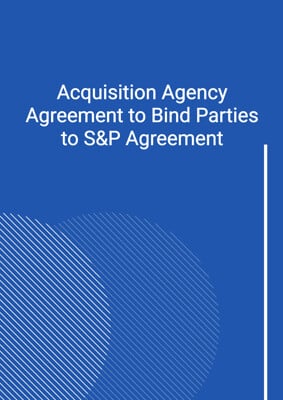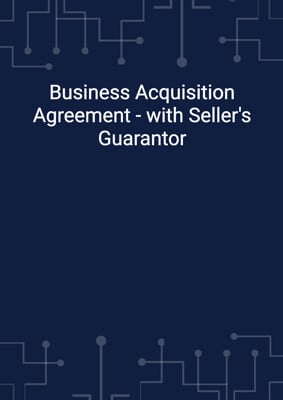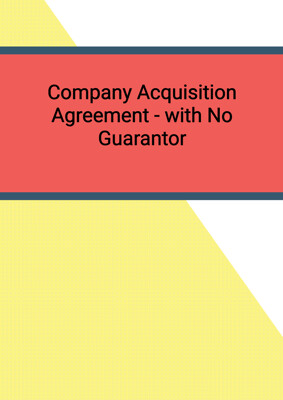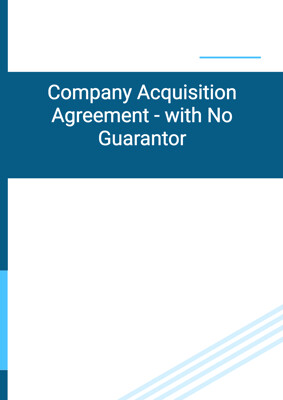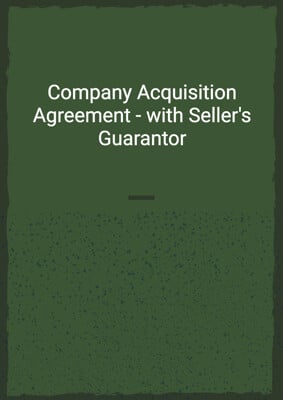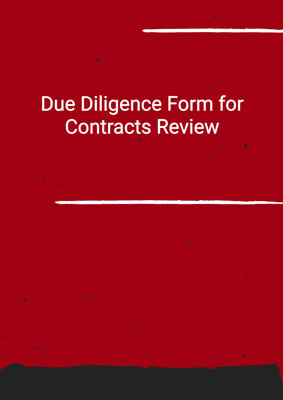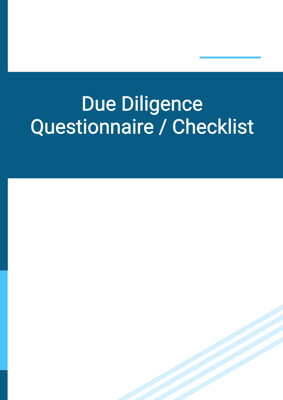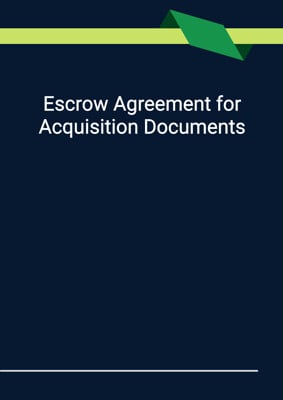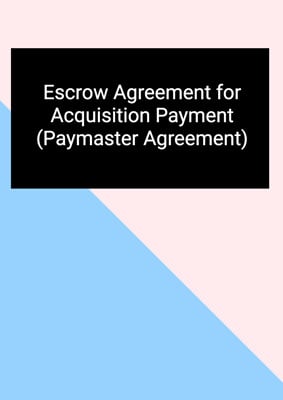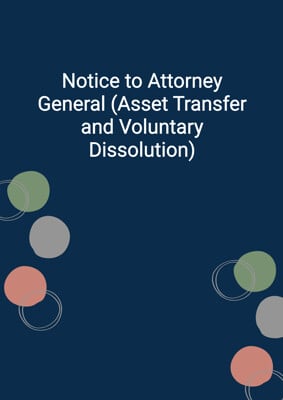
Acquisition Agency Agreement to Bind Parties to S&P Agreement
Seller - Post Agreement
Appointment of a designated seller (usually a local subsidiary) as part of the sale of group companies. The purpose of the agency agreement is to bind local buyers into the main agreement in relation to a multi-jurisdictional acquisition. This is drafted for the seller and should be used after the execution of the main agreement.
How to Tailor the Document for Your Need?
01
Create Document
Fill in the details of the parties. You can click the "Fill with Member’s Information" button to complete it with information saved to your account.
02
Fill Information
Please fill in any additional information by following the step-by-step guide on the left hand side of the preview document and click the "Next" button.
03
Get Document
When you are done, click the "Get Document" button and you can download the document in Word or PDF format.
04
Review Document
The document should be signed by the authorised signatory (or directors of a company) and witnessed to complete the formality.
Document Preview
Document Description
The Acquisition Agency Agreement to Bind Parties to S&P Agreement is a document that establishes the relationship between the buyer, seller, and designated seller in connection with a sale and purchase agreement. The document is important as it ensures that all parties involved are bound by the terms and conditions of the principal agreement.
The entire document consists of several sections that outline the definitions and interpretation, compliance, agency relationship, warranties and indemnities, variation, severability, counterparts, governing law and jurisdiction, and notices and service. Each section serves a specific purpose and provides clarity on the rights, obligations, and responsibilities of the parties.
In the definitions and interpretation section, it is stated that the agreement is being entered into in connection with the principal agreement, and any terms defined in the principal agreement will have the same meaning in this agreement. This section ensures consistency and avoids any confusion regarding the interpretation of terms.
The compliance section highlights that the designated seller agrees to comply with the obligations outlined in the principal agreement, as long as the seller is obliged to ensure such compliance. This section ensures that the designated seller fulfills its obligations and responsibilities as outlined in the principal agreement.
The agency relationship section establishes the designated seller as the designated seller of the target for the purposes of the principal agreement. It appoints the seller as the sole agent of the designated seller, granting the seller the authority to perform the principal agreement, receive or pay amounts owed, initiate and settle claims, and fulfill other obligations on behalf of the designated seller. This section clarifies the roles and responsibilities of the seller and designated seller in the agreement.
The warranties and indemnities section states that the rights and benefits held by the designated seller through the seller's agency or the principal agreement can only be enforced by the designated seller through such agency or the principal agreement. Any liability for breach of these rights and benefits will be determined solely in accordance with the terms of the principal agreement. This section protects the rights and benefits of the designated seller and ensures that any disputes are resolved according to the principal agreement.
The variation section specifies that any amendments, variations, or waivers of the agreement must be in writing and duly executed by all parties involved. This section ensures that any changes to the agreement are properly documented and agreed upon by all parties.
The severability section states that if any provision of the agreement is held to be invalid or unenforceable, it will have no effect on the remaining provisions of the agreement. This section ensures that the validity and enforceability of the agreement are not compromised by any invalid or unenforceable provisions.
The counterparts section allows the agreement to be executed in multiple counterparts, with each counterpart being considered an original. This section facilitates the execution of the agreement by allowing each party to sign separate counterparts, which together constitute one complete instrument.
The governing law and jurisdiction section specifies the jurisdiction applicable to the agreement and states that no rights under the agreement can be enforced by a third party. This section ensures that the agreement is governed by the appropriate laws and that only the parties involved have the right to enforce its terms.
The notices and service section outlines the requirements for giving notice under the agreement. It specifies that notices must be in writing, signed by the party giving it, and served by email, hand delivery, or registered post. This section ensures that all parties receive proper notice and that communication is effective.
Overall, the Acquisition Agency Agreement to Bind Parties to S&P Agreement is a comprehensive document that establishes the relationship between the buyer, seller, and designated seller in connection with a sale and purchase agreement. It clarifies the rights, obligations, and responsibilities of each party and ensures that all parties are bound by the terms and conditions of the principal agreement.
How to use this document?
1. Review the definitions and interpretation section to understand the relationship between this agreement and the principal agreement. Ensure that any terms defined in the principal agreement are understood in the same way in this agreement.
2. Familiarize yourself with the compliance section to understand the obligations of the designated seller. Ensure that the designated seller agrees to comply with the obligations outlined in the principal agreement, as long as the seller is obliged to ensure such compliance.
3. Read the agency relationship section carefully to understand the roles and responsibilities of the seller and designated seller. Take note of the authority granted to the seller as the sole agent of the designated seller, including the performance of the principal agreement, receipt or payment of amounts owed, initiation and settlement of claims, and fulfillment of other obligations.
4. Pay attention to the warranties and indemnities section to understand the enforceability of the rights and benefits held by the designated seller. Note that any liability for breach of these rights and benefits will be determined solely in accordance with the terms of the principal agreement.
5. Understand the variation section and ensure that any amendments, variations, or waivers of the agreement are properly documented and agreed upon by all parties. Any changes to the agreement must be in writing and duly executed.
6. Take note of the severability section, which states that if any provision of the agreement is held to be invalid or unenforceable, it will have no effect on the remaining provisions. Ensure that the validity and enforceability of the agreement are not compromised by any invalid or unenforceable provisions.
7. Familiarize yourself with the counterparts section, which allows the agreement to be executed in multiple counterparts. Understand that each counterpart is considered an original and that all counterparts together constitute one complete instrument.
8. Review the governing law and jurisdiction section to understand the applicable jurisdiction and the rights of third parties. Note that only the parties involved have the right to enforce the terms of the agreement.
9. Understand the requirements for giving notice under the agreement as outlined in the notices and service section. Ensure that notices are in writing, signed by the party giving it, and served by email, hand delivery, or registered post.
10. If any questions or uncertainties arise during the use of this document, consult legal professionals or seek further guidance to ensure proper understanding and implementation.
Not the right document?
Don’t worry, we have thousands of documents for you to choose from:

